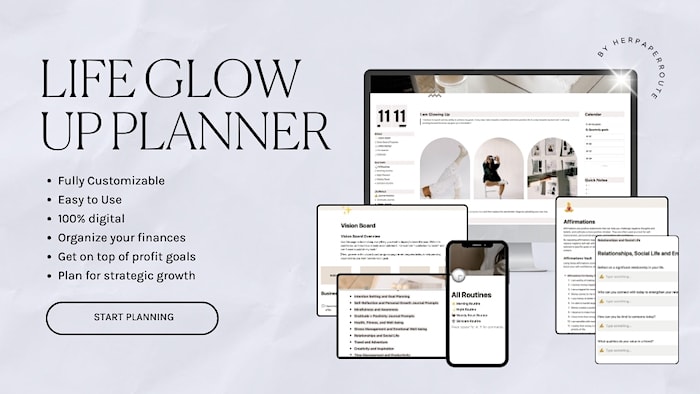The 4 Step Decision Making Process You’ve Been Missing

Making the right decisions can be challenging when a lot is depending on the outcome of these decisions or when there are a lot of options. When it comes to make-it-or-break-it situations, there is no better way to make the right choice than the 4 step decision making process.
Many successful people use this 4 step process for making decisions. It is proven successful and diminishes the chances of failures or negative outcomes for bad decisions and eliminates overwhelm from too many options.. It additionally ensures that all of the choices you make are deliberate and thought-through
In this guide, we’re going to help you enhance your decision support skills and discuss all the steps associated with this process. We help you understand the process so you can practice it within your own business, or even in your own personal life.
The 4 Step Decision Making Process
Making the right decisions can be very stressful and some even develop decidophobia – an irrational fear of making decisions. They may have other mental health issues if they make a few wrong choices, too.
As an affiliate partner of various brands and sponsored content, we may earn commission on qualifying purchases. Disclaimer | Advertise With Us
A struggle to make the right choice isn’t new at all.
There are many different methods, such as numbering methods, scenario planning methods, and business forecasting. These days, you can even find web-based decision aids, evidence-based decision aid tools, and other decision resources online.
The 4 step process is very similar to the Herbert Simon model of decision-making and is one that is often used in business situations. It is used to avoid making the wrong decision or to make quick decisions.
Let’s take a closer look at the 4 step approach that can be used for a wide range of choices.
Step 1 – Identify the Issue
The first step of decision making is to study the issue at hand. You need to clearly outline the exact issue and target the specific decision that needs to be made. This includes identifying the problem that needs to be solved or that is driving this decision that needs to be made.
It is also important to identify the purpose of this informed decision that needs to be made. The purpose of the potential decision can help you prioritize preferred options, categories of decisions, or a single option.
For example:
Let’s say your company needs to buy some new paper for mass printing. You will need to decide what type of paper to buy (identify the essential issue.) Why is this decision important? Paper types vary a lot in price and can impact the printer’s ability to function (identify the purpose of the decision.) The wrong type of paper will cause paper jams and can affect the overall printing cost or condition of the printer.
Example Two:
Let’s say you have some extra savings that you’d like to invest. What company or stock should you invest in? (Identify the issue.) Why is it important to choose the right investment option? (Identify the purpose of the decision.) The right investment solution will provide you with higher returns on investment in a shorter amount of time and offers good security.
Step 2 – Evaluate Alternatives
Once you have identified the issue or strategic decision that needs to be made, it’s time to make a list of all options. Do some research on all possible options for your decision making process. You can do this by creating a list of options you have and evaluating all the advantages and disadvantages of each option. Do a side-by-side comparison of all your options.
For example:
When choosing printer paper, you have lots of brands to choose from. List those brands and the features of their paper. Printworks can be a good sustainable option since all of their paper is made from recycled materials: but, their paper can be slightly pricey. HP BrightWhite can be a more affordable and higher quality paper, but is not quite as sustainable. Listing all the pros and cons will help you make a better conscious decision, based on your company’s ethics.
Step 3 – Assess Risks
Find out what the main risks are for each option you have available. You should try and think a few steps ahead and imagine the scenarios for each option you have. What will be the roadblocks for each decision? Will there be any risks or complications?
For example:
When choosing the right paper type, you need to consider how the paper will affect print quality and printer performance. Recycled paper sounds terrific but might cause more paper jams, which can damage the printer or waste a lot of paper. Other paper types might be of higher quality, but can affect the environment negatively.
Step 4 – Make the Decision
Once you have identified the decision, listed all the options, and analyzed all the risks, it’s time for you to make a decision. Based on all the data you have collected, you should now be able to make a collected and confident decision. You will also already know the likely outcome of this decision.
For example:
You need to choose the right kind of printing paper on a tight budget. The best decision is to choose an affordable paper that’s going to cause the least amount of wear and tear on the printer. If you prioritizes sustainability, it’s going to be better to spend a little more on recycled paper, even though there may be printer damage.
With this type of decision-making method, you’ll already know what the expected outcome of your informed decision will be. This is great for reducing anxiety. All that’ll be left to do is keep your eye on the outcome of the decision, so it will influence future related decisions.
The 4-Step Decision-Making Process You’ve Been Missing – Conclusion
We hope this 4 step decision-making process will guide you in making decisions and help you come up with great solutions, no matter how simple or complex the issue might be.





![How to Use a Master To-Do List [Finally Get EVERYTHING Done]](https://wellandwealthy.org/wp-content/uploads/2019/07/haute-chocolate-styled-stock-photography-simple-mornings-15-final-2-768x512.jpg)

![43 Of The Best Bullet Journal Gift Ideas [They won’t have seen before!!!]](https://wellandwealthy.org/wp-content/uploads/2018/08/arts-and-crafts-bracelet-card-744662-2-768x512.jpg)